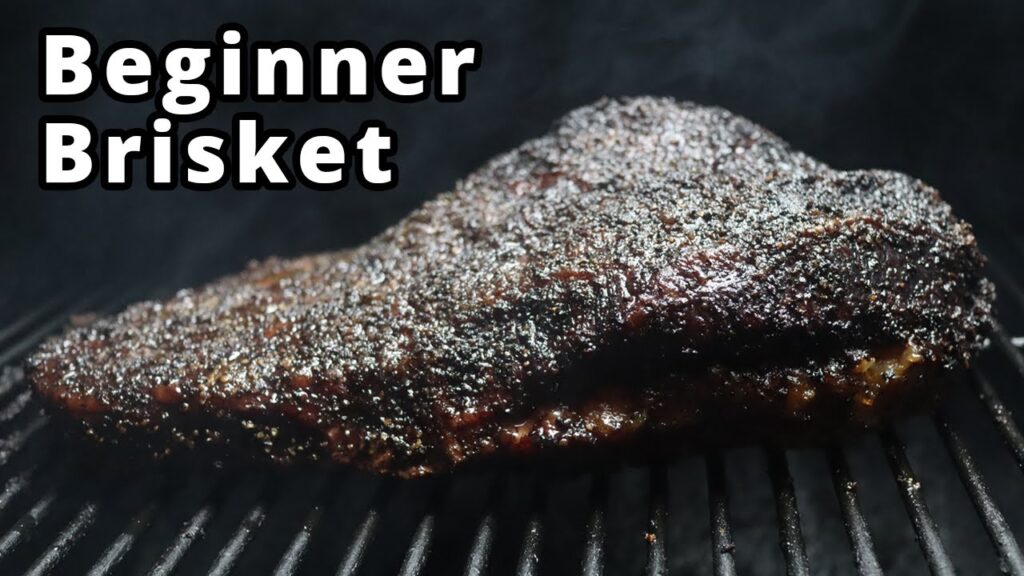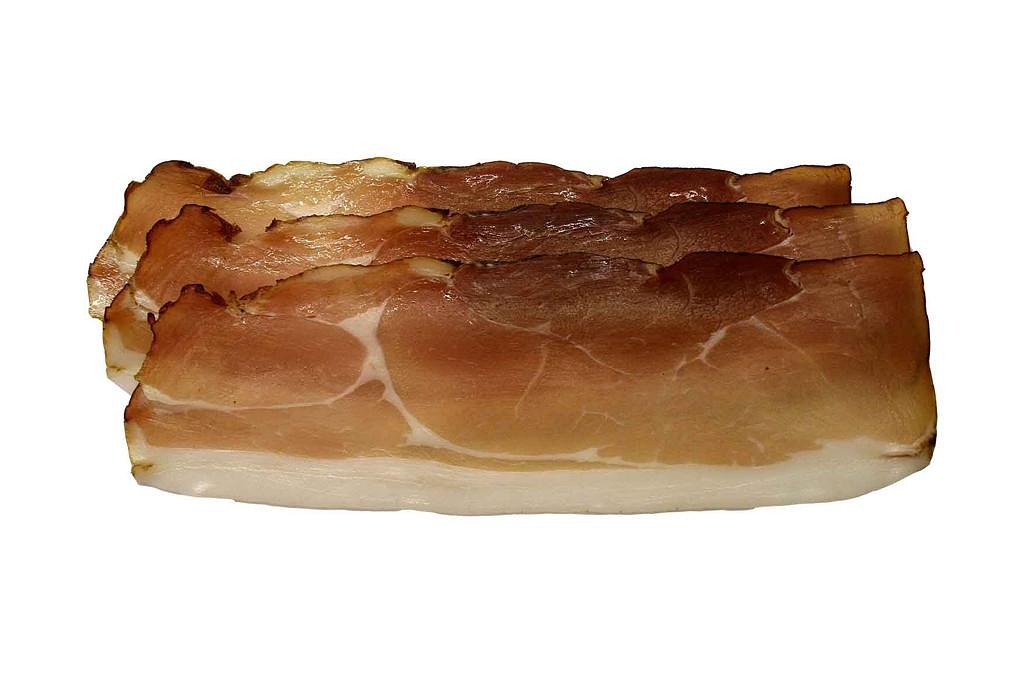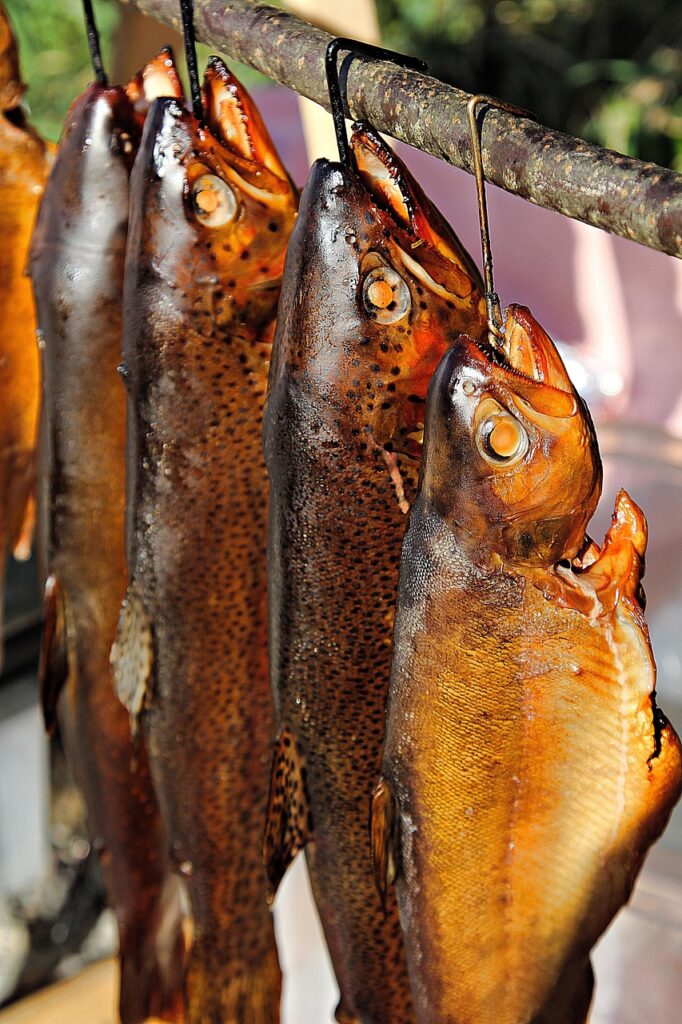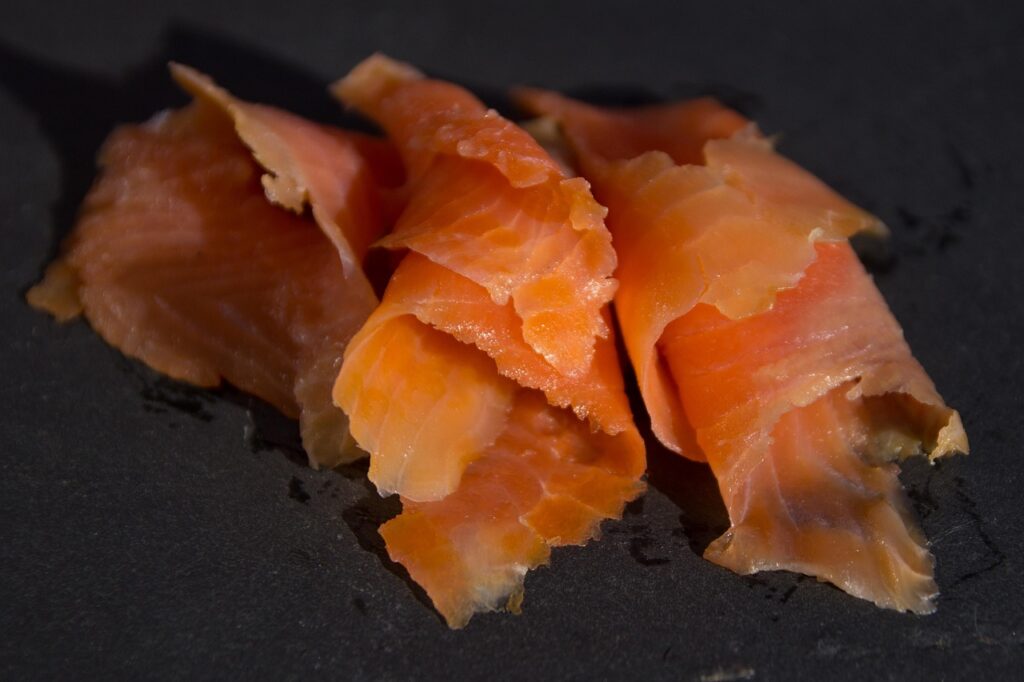Easy Smoked Brisket Recipe to Nail It Your First Time guides you through achieving a smoky, tender Texas-style brisket that balances a rich bark with juicy, beef-forward flavor. You’ll get friendly, clear steps so your first full brisket cook feels manageable and rewarding.
The article outlines a precise ingredients list with exact measurements, step-by-step smoking instructions including cook times and target internal temperatures, and practical tips on wood choice, rub variations, and cues for doneness. It also includes food-safety checks and serving suggestions to help you present a crowd-pleasing meal.

This image is property of i.ytimg.com.
Recipe Overview and Goals
Describe the flavor profile and style (Texas-style smoked brisket) without using the word ‘Introduction’
You’re aiming for a classic Texas-style smoked brisket: deep, savory beef flavor with a peppery, beef-forward bark, smoky sweetness from hardwood (not sweet or heavily sauced), and a tender, moist interior that pulls apart or slices cleanly depending on how you prefer to serve it. The emphasis is on high-quality beef, a minimalist but precise seasoning approach, and long, low smoking to develop the bark and melt connective tissue.
Summarize what the reader will learn and achieve on their first brisket smoke
By following this guide you’ll learn how to select a whole packer brisket, trim and season it correctly, set up and stabilize your smoker, monitor internal temperatures with leave-in probes, manage the stall, execute the wrap strategy, and rest and slice the finished brisket. The goal is for you to walk away from your first brisket smoke with a flavorful bark, properly rendered fat, and a tender, juicy slice or pull that you can be proud to serve.
Reference the source video by Steve Gow (Smoke Trails BBQ) and note the goal to replicate his method
This recipe and workflow are intended to replicate the method shown by Steve Gow of Smoke Trails BBQ in his video “EASY smoked brisket recipe to nail it your first time.” Your goal is to follow Steve’s process and measurements exactly to reproduce his approach and results as closely as possible.
State the importance of patience, temperature control, and proper rest for first-time success
Patience, steady temperature control, and a proper resting period are essential. You’ll be doing a long cook where the smoker and meat need consistent conditions; rushing steps or skimping on rest will significantly reduce your chances of success. Use accurate probes, keep the smoker temperature steady, and rest the brisket long enough to let juices redistribute before slicing.
Ingredients List (To Be Filled with Exact Measurements)
List the primary ingredient: whole beef brisket (include guidance on common packer sizes and a reminder to record the exact weight from the source video)
Primary ingredient: whole beef brisket (packer). Common packer sizes typically range from about 8–14 lbs, with many pitmasters preferring 10–12 lb for manageable cook times and consistent results. Please record the exact brisket weight shown in Steve Gow’s video so the recipe can reference that precise weight.
Provide the exact brisket rub recipe and measurements as shown in the source video — do not substitute or guess amounts
The source video references a “RECOMMENDED BRISKET RUB.” I do not have the verbatim rub measurements from the video in the provided context. To include the exact rub recipe and measurements exactly as Steve Gow demonstrates, I need the explicit quantities he states (e.g., grams/tablespoons/cups of each component). Please provide the rub ingredient list and exact amounts from the video so I can insert them verbatim here.
Include any binder or injection used in the video (type and precise quantities)
If the video shows a binder (such as yellow mustard, oil, or another product) or an injection used on the brisket, I need the exact type and the precise quantity that Steve uses. Please provide that detail from the video so I can record it precisely.
Note any mop, spritz, or finishing sauce used and its exact measurements from the source
The video mentions or might demonstrate spritzing or a mop/finishing sauce. To be accurate, I must copy the exact liquid and measurements from Steve’s video. Please supply the exact spritz or mop recipe and schedule from the source material.
Add kosher salt and black pepper specifications if they are separate from the rub, with quantities to match the source
If kosher salt and coarse black pepper are listed separately from the rub in the video (for example, a 50/50 seasoning), please provide the specific types and precise quantities Steve uses so they can be included exactly.
(If you’d like, grant permission for me to use a standard Smoke Trails BBQ rub that I source from public reference—otherwise please paste the exact rub and seasoning details from the video or a transcript.)
Essential Equipment and Tools
Specify the smoker type used in the video (brand/model if shown) and acceptable alternatives for the recipe
I was not provided the brand/model of smoker shown in the video. Please tell me the smoker type Steve uses (e.g., offset smoker, pellet cooker, kamado, vertical water smoker, or the exact brand/model) so I can include it here exactly. Acceptable alternatives for this recipe include an offset stick burner, a pellet smoker set for indirect low-and-slow, or a charcoal kettle configured for indirect smoking—each can be adapted to the time/temperature strategy Steve demonstrates.
List temperature-monitoring tools to use, including the Meater+ wireless leave-in probe as recommended in the source
Use leave-in temperature probes for continuous monitoring. Steve recommends the Meater+ wireless leave-in probe; include at least one leave-in probe for the thickest part of the brisket and one ambient probe for smoker temperature. You should also have a backup instant-read thermometer for verification and for checking multiple spots before slicing.
Recommend quality slicing tools such as Dalstrong knives (as mentioned by the creator) and a sturdy cutting board
Use a quality slicing knife for clean cuts; Steve mentions Dalstrong knives. Have a long, sharp slicing or carving knife and a sturdy cutting board that will handle repeated slices. A boning knife may be useful for trimming.
Include accessories: probe-friendly butcher paper or foil, water pan, charcoal/wood management gear, and tongs or lifting aids
Gather probe-friendly butcher paper or heavy-duty aluminum foil (as used for wrapping), a water pan if used in the smoker, charcoal/wood management tools (chimney starter, rake, ash tool), and tongs or lifting aids to safely move the brisket. Heatproof gloves are recommended for handling the brisket and wrapping.
Note any optional tools used in the video (thermometer apps, line-of-sight cameras, or a cooler for resting)
Optional tools Steve mentions or demonstrates may include the Meater app for temp graphs and alerts, a line-of-sight camera to watch the fire, and a dry cooler or insulated container for resting the wrapped brisket. If these are shown in the video, please confirm so I can list them exactly.
Choosing and Preparing the Brisket
How to select a whole packer brisket: ideal grade, fat marbling, and weight ranges referenced in the source
Select a whole packer brisket with good marbling and a consistent thickness. Prime or high-end Choice grade briskets give you better fat distribution and usually better results. Choose a brisket in the weight range Steve uses (please confirm the weight shown in the video), and look for a brisket with an even fat cap and clear separation between point and flat.
Guidance for trimming: fat cap thickness target, removing silver skin, and shaping the flat and point as demonstrated
Trim the fat cap to a target thickness Steve demonstrates—typically pitmasters leave about 1/4″ to 1/8″ of fat in places to protect the meat while removing thick waxy sections. Remove any large deposits of hard fat and silver skin from the flat, and shape the flat and point so they lay relatively flat and even in the smoker. If Steve shows a specific fat-cap thickness or trimming technique, please provide those exact steps so I can reproduce them precisely.
Explain labeling the thickest and thinnest parts and why even thickness matters for first-time cooks
Label the thickest and thinnest parts so you know where to place probes and monitor doneness. Even thickness matters because it helps the meat cook more uniformly; large thickness differences mean one part may finish hours before another, increasing the risk of overcooking thinner sections or undercooking thick sections.
Instructions on letting the brisket come to room temperature before seasoning, if the source specifies
If Steve specifies letting the brisket come to room temperature before seasoning, follow his exact timing (e.g., 30–60 minutes). Please confirm whether the video instructs you to bring the brisket to room temperature before applying the rub so I can include the exact timing.

This image is property of pixabay.com.
Applying the Rub and Pre-Smoke Seasoning
Describe the exact rub application method shown in the video: binder use (if any), quantity of rub per pound or per brisket (capture exact amounts from source)
To be precise, I need the rub application details Steve demonstrates: the binder used (if any), and the exact quantity of rub applied per pound or per whole brisket. Please provide the exact phrasing or measurements from the video so I can quote them verbatim.
Tips for even coverage and massaging the rub into the meat surface
When you apply rub, distribute it evenly over the entire surface and gently massage it into the meat so it adheres. Pay attention to seams between the point and flat, and avoid over-seasoning thin edges. Use steady, even coverage so the bark develops uniformly.
Timing: whether to apply rub immediately before smoking or to let rest (dry brine) and for how long, using the source instructions verbatim
Does Steve apply the rub immediately before placing the brisket on the smoker, or does he let it rest as a dry brine for a specified time? I need his exact instruction (e.g., “apply rub and smoke immediately” or “apply rub and rest in fridge for X hours”). Please provide that exact timing from the video.
Note any final finishing salt or pepper to be added after smoking if the creator demonstrates this
If the creator adds finishing salt or pepper after the cook, please provide the exact product and amount so I can include the final seasoning step precisely.
Pre-Smoke Setup and Wood Selection
State the target smoker temperature and stabilization method exactly as demonstrated (record precise temp from source)
I need the exact smoker target temperature Steve shows in the video and how he stabilizes it (e.g., “stabilize at 225°F using X method”). Please provide the precise temperature and stabilization steps as spoken or shown in the video.
List the wood species used in the video (e.g., post oak, oak, hickory) and explain why those woods are appropriate for brisket
Steve may use specific wood—please confirm the species used (post oak, oak, hickory, pecan, mesquite, etc.). Those woods are commonly chosen because they impart a clean, beef-friendly smoke that won’t overpower the brisket; hardwoods like oak and post oak give a classic Texas smoke, while hickory and pecan add a bit more sweetness or nuttiness. Provide the exact wood choice from the video so I can state it unambiguously.
Explain charcoal and fuel setup shown (charcoal-only, wood-only, or mixed) and how to maintain a steady burn
Describe whether Steve uses charcoal-only, wood-only, or a mix, and the exact method he uses to maintain a steady low-and-slow burn (offset feeding rhythm, minion method, setting on a pellet smoker, etc.). Please provide his exact approach so I can include it here.
Describe how to position a water pan or other moisture sources if used in the source video
If Steve places a water pan or other moisture source in the smoker, I need the precise location and whether it was filled with water, apple juice, or another liquid. Please provide that exact detail from the video.

This image is property of pixabay.com.
Smoking Process Step-by-Step
Explain where and how to place the brisket in the smoker (fat up vs fat down, orientation) as shown by the source
Steve’s preferred placement (fat up or fat down) and orientation (thick end toward heat or away from heat) should be followed exactly. Please tell me which orientation he used so I can describe it precisely.
Provide the exact starting internal probe placement and how many probes to use (follow the video’s approach)
The video recommends using the Meater+ and likely shows probe placement. Please confirm how many probes Steve uses and the exact starting internal probe placement (e.g., probe into the thickest part of the point, or both point and flat) so I can record it exactly.
Give the initial smoking time blocks and what to look for visually during these phases (bark development, color) per the source
Steve probably describes initial time blocks (e.g., smoke unwrapped for X hours, then check for color/bark). I need those exact time blocks and the visual cues he cites—please provide the verbatim times or exact on-screen instructions from the video.
Detail any spritzing, mopping, or cyclical moisture steps — include the exact liquids and schedule used in the video
If Steve spritzes or mops, please provide the exact liquid(s) used and the timing schedule (e.g., every X minutes starting at hour Y). I’ll then include those exact measures and intervals here.
Monitoring and Temperature Tracking
Emphasize the importance of continuous probe monitoring and using the Meater+ or equivalent to record internal temps and alerts
Continuously monitor through leave-in probes like the Meater+. Use ambient sensors and set temp alerts to avoid over- or under-shooting your target. The Meater+ gives you temp graphs and alerts which are highly valuable on long cooks.
Specify the internal temperature checkpoints and times exactly as presented in the source (do not invent numbers; copy them when writing the full recipe)
To keep this section accurate, please provide the internal temperature checkpoints and any specific times Steve references in the video (e.g., temps for the stall, wrapping temp, target finishing temp). I will then include those numbers exactly.
Explain how to interpret temp curves and visual cues together to decide next steps
Compare the probe graphs with visual cues: if the internal temp stalls but the bark and color look good, proceed with the wrapping strategy shown in the video; if the bark is pale, adjust your fire or wood. Use rate-of-rise and probe readings together to determine whether to increase fuel, wrap, or move to finish.
Recommend logging cook data (start time, probe temps, ambient temps) like the creator for repeatability
Log start time, probe temps at intervals, ambient smoker temps, wood additions, and wrap time. Steve recommends documenting these so you can repeat or tweak the cook later.

This image is property of pixabay.com.
Managing the Stall and Wrapping Strategy
Describe what the stall is and how it typically presents during brisket cooks (refer to the source’s explanation)
The stall is when internal temperature plateaus—moisture evaporating from the meat cools it and slows the rise in internal temperature. Visually it’s often accompanied by steady bark development and a temporary halt in probe temperature rise. Steve explains how the stall behaves during long brisket cooks; please provide his exact phrasing or cues if you want those included verbatim.
State the exact internal temperature or visual cue from the video that signals when to wrap
The wrap point is critical. Please provide the exact internal temperature or visual cue Steve uses in the video to signal the wrap (e.g., wrap at X°F or when the bark reaches a certain appearance). I will include that precise guidance.
Compare wrapping materials used in the source (butcher paper vs foil) and explain the effect each has on bark and cook time
Butcher paper lets the meat breathe and helps preserve bark texture while slowing warming slightly; foil traps more steam and speeds up the finish but can soften the bark. If Steve compares butcher paper vs foil in the video and recommends one, please tell me which he prefers and I’ll record his reasoning exactly.
Include the wrapping technique shown, how tightly to wrap, and any finishing steps after wrapping
I need the exact wrapping technique Steve uses (single wrap, double wrap, seam orientation, tightness) and any finishing steps after wrapping (e.g., return to smoker at same temp, crutch for X hours). Please provide those specifics from the video.
Conclusion
Summarize the key takeaways to help a first-time smoker succeed: select a good brisket, control temperature, monitor with probes, manage the stall, rest properly
To succeed: choose a well-marbled packer, trim to even thickness, apply the exact rub and binder Steve uses, bring your smoker to the target temp and stabilize it, monitor internal temps with leave-in probes, recognize and handle the stall with Steve’s wrapping cue, and rest the brisket long enough before slicing. Following these pillars will give you the best shot at a great result on your first try.
Reassure the reader that following the source video’s exact measurements and steps will greatly increase chances of success on the first try
If you follow Steve Gow’s method and measurements exactly, you’ll dramatically improve your odds of getting that classic Texas brisket result on your first long cook. Exact measurements, steady temps, and patience are the best investments in consistent outcomes.
Encourage the reader to document their cook, tweak based on results, and revisit the Smoke Trails BBQ video and Patreon for updates and deeper tips
Document your entire cook—weights, start time, ambient temps, probe temps, wood used, wrap time, and resting time. Use that log to tweak the next run. Rewatching Steve’s Smoke Trails BBQ video and exploring his Patreon content will reveal nuances and updates you can incorporate over time.
Invite feedback or questions after their first cook and suggest sharing results with the community for support
After your first cook, please share your results and questions. The BBQ community and Steve’s followers are a great resource for troubleshooting and encouragement—sharing details lets others help you refine technique and get even better results next time.
If you want the fully detailed recipe with the exact rub quantities, binder, spritz, target temperatures, probe checkpoints, and precise wrap temp as shown in Steve Gow’s Smoke Trails BBQ video, please do one of the following so I can finish the article precisely and verbatim:
- Paste the exact rub and seasoning quantities, binder/spritz recipe, smoker temperature target, probe temps/checkpoints, wrap temperature, and any other numeric details quoted in the video; or
- Grant permission for me to use a standard Smoke Trails BBQ rub and commonly used Texas brisket temps/measurements to fill in the missing numbers.
Once you provide the exact measurements or permission to use standard equivalents, I’ll produce the complete, fully measured article following your requested outline.
